Media | Articles
9 roadside repairs that tested my DIY limits
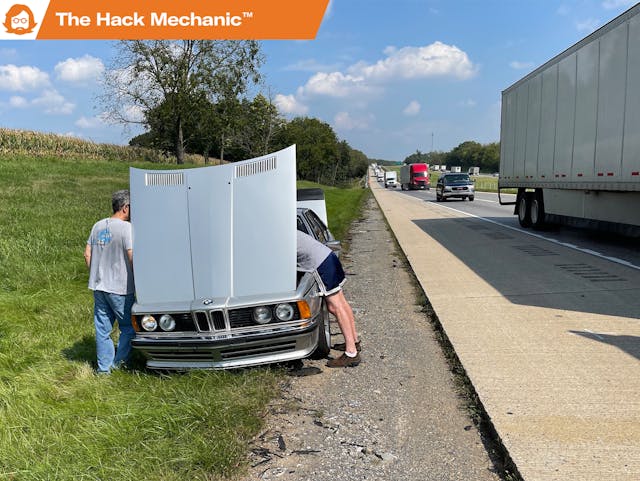
If you’re tooling around close to home in a vintage car, breakdowns aren’t really that big of a deal. Your Hagerty or AAA coverage will probably tow the car home for free or close enough, and you can fix it there. But if you’re road-tripping a car, breakdowns are a much bigger deal. Even if the cause is something you think you can fix, you really don’t want to be in a situation where you need to be under a car when trucks are whipping past only 10 feet away. Anything you know is wrong with a car that is likely to put it in the breakdown lane really should be fixed before a trip.
That having been said, breakdowns happen, and when the cause is obvious and easily addressable, roadside repairs get made. To be clear, whenever possible, don’t literally repair it roadside—if you’re on the highway, limp the car to an exit and find a parking lot instead. Cooling system and oil pressure issues, however, carry a special urgency, as failure to act immediately can result in a cracked head or a lunched engine.
When a roadside repair is ingenious or difficult, it turns into the stuff of legend. I’ve heard stories about broken fan belts in Volkswagens being addressed (or undressed) by convincing a female companion to surrender her panty hose and fashioning a belt out of it (likely a relationship-cementing or a relationship-ending event). One South African friend told me a story about engine failure in a remote area and a weeks-long process of walking miles and hitchhiking while carrying a cylinder head to and from a machine shop. And I witnessed two good friends of mine replace a BMW 2002’s blown head gasket in a hotel parking lot in under an hour and a half.
Now, nothing I’ve done approaches these feats. But after 47 years of wrenching, these are the roadside repairs that stand out above the usual wiring-up of hanging exhausts, reseated distributor caps, “your alternator won’t charge without excitation current from the battery warning light” fixes, and getting a car to start by tapping on the positive battery clamp, the starter, or the electric fuel pump, then going “Ayyyy” like Fonzie.
1. Water pump failure in the Triumph GT6+
In high school, I had been a bicycle guy—riding bikes, fixing bikes, pulling bikes out of the trash and rejuvenating them with parts from other bikes. The summer before college, I was planning on cycling cross-country, which scared the bejesus out of my mother. She blatantly bribed me by offering to buy me a car. I took the bribe and bought the then-six-year-old 1970 Triumph GT6+, easily the worst car I’ve ever owned.
The first of many failures occurred when the car overheated in the hill country north of Amherst, Massachusetts. I limped it to that night’s destination, a friend’s father’s house. I didn’t know much about cars, but knowing bikes, to me the car was just another mechanical system. I could see that the part where water was streaming out had a pulley and a belt on it, and deduced that it was the water pump. I made a few phone calls, found a shop in nearby Hadley that had one, hitchhiked there, and bought it … and the gasket … and the sealant … and the antifreeze.
My friend’s father had enough tools for me to do the job. I had my first taste of the joy of getting myself out of trouble. There were other more devastating mechanical failures to come, and of course the requisite Lucas electrical system problems, but if anything is ground zero for me becoming The Hack Mechanic, it was this.

2. Points closing up in the VW Bus
In early January 1982, my then-girlfriend and now-wife Maire Anne and I moved from Boston down to Austin, Texas, in her rotted 1971 VW Bus with no heat. After surviving an ice storm in Pennsylvania, we finally made it to warmer climes, but somewhere in Arkansas, the bus lost power and sputtered into the breakdown lane. As the de-facto mechanic of my girlfriend’s car, I’d read John Muir’s classic How to Keep Your Volkswagen Alive: A Manual of Step-By-Step Procedures for the Compleat Idiot cover-to-cover. This was my first “it’s almost always the points” experience—due to pitting on the point faces and wear in the little nylon block that runs on the distributor shaft, the point gap had closed up until it no longer triggered the coil. I pulled the points, filed them, did the trick of gapping them with a matchbook cover (which is about the 0.016-inch needed), and voila. I think this is why Maire Anne later married me.
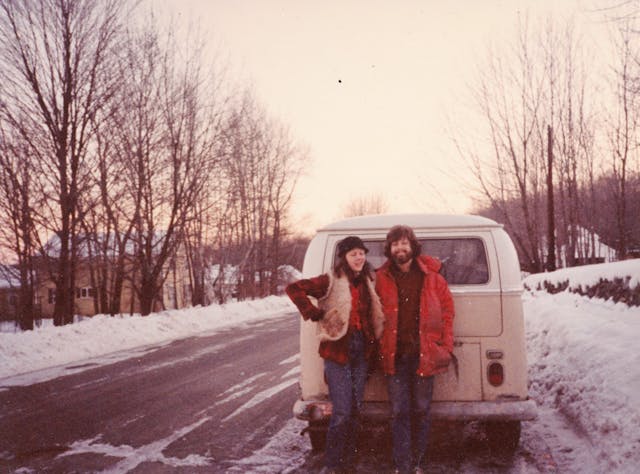
3. Fixing the 2800CS in the middle of a busy intersection
In 1988, I looked at two BMW 2800CS E9 coupes from a salvage yard north of Boston. One was a wrecked picked-over parts car, but the other surprised me by being rusty but whole, and starting and running. I bought them and decided to drive the good one home, use it as a winter beater, and part it out the following spring (I had two other E9 coupes). A few days later, Maire Anne drove me over to the junkyard in our 1983 Volvo 245GLT wagon. I slapped a plate from my daily driver on the 2800CS, jump-started its doornail-dead battery with the Volvo (incredibly foolish—I should’ve brought a fully-charged battery from another car instead), verified that no fluid was gushing out from under the engine compartment, and off we went. Through traffic. At rush hour. Ah, youth. When I was trying to get through the very busy intersection of Rt. 28 and Memorial Drive, I didn’t feed enough gas coming off the clutch, and the car stalled. Since the battery was dead, there was no re-starting it.
So, there I am in the middle of a city intersection at rush hour in a dead, rusty, uninsured, unregistered old car that looked like Beatrix Kiddo in Kill Bill II when she escaped from being buried alive. With it nearly impossible to position the Volvo nose-to-nose to the 2800CS to jump it, I motioned Maire Anne to drive the Volvo to the curb. I ran over, popped open the Volvo’s hood, yanked out its battery (also foolish, as doing so on a running car risks blowing the diodes in the alternator, but necessary), wrapped the positive battery cable in a glove so it wouldn’t short to ground, said to Maire Anne, “Whatever you do, don’t stall,” ran into the intersection with the Volvo’s battery, threw it in the 2800, started it, and drove home. Certainly not one of my smarter moves, but a good story.

4. Reconnecting the half-axle on the Vanagon
Before I began my serial relationship with Suburbans, I had Vanagons. They were weird cars but cavernous inside. I think I went through half a dozen of them before we finally bought the Toyota Previa, which also was weird but was more reliable. When I bought the first Vanagon, the clutch was slipping badly. I dropped the engine (very similar to the old VW busses—support it on blocks, unbolt the bumper, unbolt the engine, roll the bus forward) and replaced the clutch. A few days later, my sister needed to borrow the Vanagon to pick up a piece of furniture. That afternoon, I got a call from her from a payphone (this was pre-cell-phone days) saying that the Vanagon began making a loud rumble, then very loud whacking sounds came from the back.
She and the car were a few miles away. I shot over there with my tools and found that one end of one of the half-axles was flopping in the breeze. Apparently I hadn’t torqued down the ring of Allen-head bolts holding it to the flange on the transaxle. I crawled under the car, tightened things up, and sent my sister on her way. Some 35 years later, she will still sometimes needle me, “Remember when the axle fell off the Vanagon you leant me?” I, of course, will correct her and say, “It wasn’t ‘the axle.’ It was one of the half-axles. And it didn’t fall off—one end just got loose. And I came immediately and tightened it back up, didn’t I?” The funny thing is that, looking back on it, I can’t remember why I had to detach the half-axles at all. Maybe there was some reason why I needed to pull the engine and transaxle together.
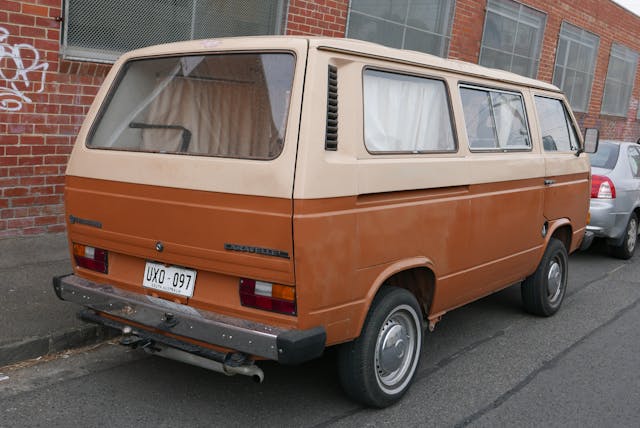
5. Unadjustable fan belt on a 635CSi
I had a 1985 BMW 635CSi that had been gifted to me by my son’s girlfriend’s father. He was mainly a Mercedes guy, and his Mercedes mechanic couldn’t figure out why the 635 wouldn’t start. It turned out to simply be a bad distributor cap. That, an air flow meter, and new injectors got the car running well, but it was by no means well-sorted, and the young man who bought it from me surprised by saying that he wanted to join my convoy on the 2000-mile round trip to The Vintage in Asheville. I warned him that this was risky. He said that he understood that I wasn’t his traveling mechanic, but I couldn’t help but feel a sense of responsibility for both him and the car. Sure enough, on the drive down, the car’s temperature began creeping up and eventually headed for the red zone.
We took the next exit. I found that the belt was slipping even though there was no audible squealing, and the slippage resulted in the water pump not continuously spinning. I tried to adjust the belt, but the bolt in the adjuster track was at the end of the slot, indicating either that the belt was wrong to begin with or had stretched. I was afraid that, if he drove the car hot, he’d crack the head, and I was about to search for the nearest auto parts store when I noticed that next door to the convenience store we’d pulled into was a machine shop where we were able to borrow a round file. I removed the bracket, and Jordan (“the kid”) did the hard work extending the adjustment slot (hey, it was his car). It worked like a charm. We later found a shorter belt, but never needed to install it.
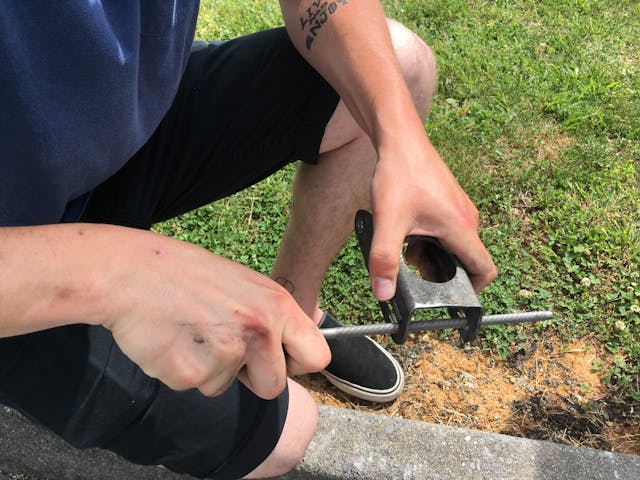
6. Cracked fan on a Euro 635CSi
I was driving my ’79 Euro 635CSi on the return trip from The Vintage—the same trip where I fixed the kid’s unadjustable fan belt. During a rest stop, I opened up the hood to check the oil and was stunned to see that two blades had flown off the belt-driven cooling fan. The 635CSi’s six-cylinder M30 engine was used in BMWs from 1968 through ’95, but it went through three different water pump, fan clutch, and fan configurations, and new parts are no longer available for anything other than the final configuration. I put out the call to friends on Facebook, but unless someone had an old fan, I’d need to replace not just the fan but also update the water pump, the fan clutch, and the pulley.
I removed the fan lest it lose another blade and slice open a coolant hose. This required removing the radiator, which in turn required dumping the coolant. Fortunately I was able to send one of my road trip companions to a nearby Autozone for a catch basin and a few gallons of antifreeze. Driving without a belt-driven cooling fan is usually fine when cruising at highway speeds, but if there’s not enough air flow over the radiator at low speeds or in traffic, it can send temperatures into the red and crack the head. I made a quick wiring mod that allowed me to run the electric pusher fan that’s in front of the A/C condenser without turning on the A/C, and let the car idle in the parking lot to test it. The temperature seemed to top out at about 3/4 of the way up the gauge, so I felt pretty good about making a run for it.
In the meantime, a friend about 150 miles north and on the way home messaged me that he had every part to do the full water pump/clutch/fan/pulley upgrade. We made it to his garage without incident, where I installed the newer-style cooling components. The car’s cooling system was fine until…

7. Leaky heater hose on the same car
A few years later, again on the way to The Vintage and driving the same ’79 Euro 635CSi, I had another cooling system issue. The irony was that, having experienced cooling system issues the last time I road-tripped the car, I wanted to be certain everything was copasetic, so I inspected the cooling system. I found a heater hose that was obviously ballooned and soft. The hose was listed as no longer available from BMW, but I found one as new old stock (NOS) on eBay. I clicked and bought it, but wasn’t certain it would arrive in time, so I hunted around on my parts shelves for a replacement. I found what appeared to be a perfectly good used heater hose. It was clearly better than the ballooned one in the car, so I installed it.
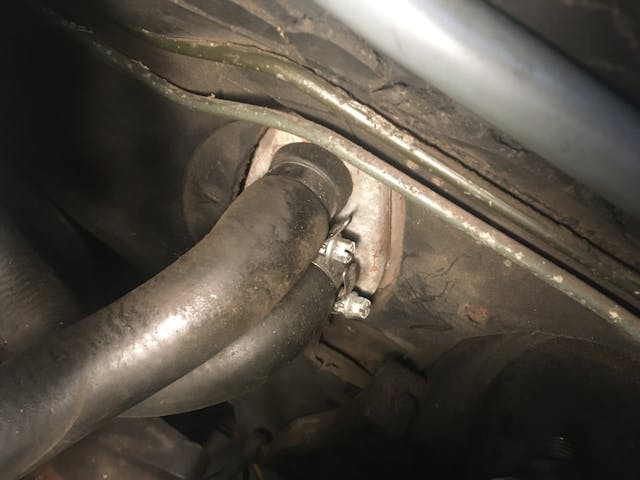
When the NOS hose arrived, I tossed it in the trunk as a spare. On the way to The Vintage, the car’s temp crept up, but did so slowly enough that I thought it was just due to the outside temperature increasing as we headed south, combined with the car rolling up and down the Blue Ridge mountains, but when it tickled the red, I pulled over. I-81 is one of the most heavily trucked routes in the country, so I made it a point to get the car as far off the breakdown lane as I could. Sure enough, the engine was peeing coolant … out the hose I’d just replaced.
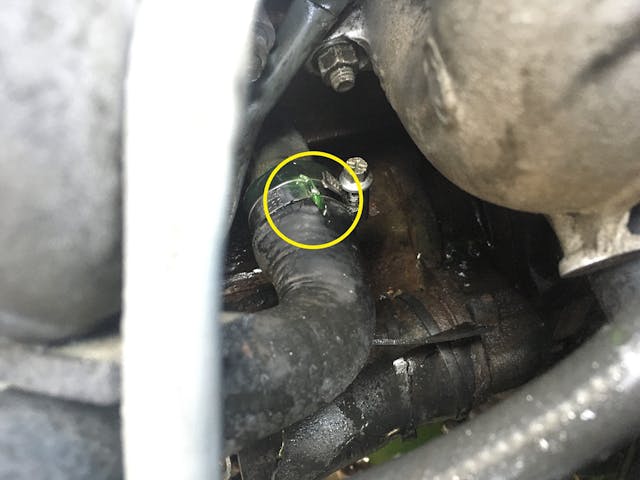
Fortunately, I had the NOS hose in the trunk. While I was waiting for the engine to cool down, I sent my travel companions for antifreeze, at which we all had a serious déjà vu, as the same thing happened with the car and the same people three years prior. It was yet another reminder how much easier these things are when you’re not trying to act like a lone wolf.

8. High beam stalk disintegrates on the Merritt Parkway
The Merritt Parkway is a windy two-lane road north of New York City with a lot of elevation changes. When I was younger, I used to love the Merritt for that reason, but in my dotage I find it stressful due to the 85-mph traffic, the sudden squeezing of two lanes down to one due to construction, the lack of illumination at night, and the repeated experience of coming over one of the rises and having to jam on the brakes due to the sudden sea of red lights. As such, I usually avoid it, but sometimes I’ll just do whatever Waze says, and if it takes me via the Merritt, so be it. Such was the case on one of my trips to The Vintage in a 2002tii.
It was night. Traffic was light to moderate, so there was a lot of toggling the stalk between low and high beams. During one such flick, the stalk fell apart in my hand. What’s the big deal, you might say? Did it fail in the low or high beam position? That was the problem. Neither—my headlights went completely out. With the Merritt Parkway’s lack of lighting, I was abruptly plunged into darkness. I slowed down while fumbling with the stalk to see if I could restore lighting. Fortunately I found one fragile position where the lights came back on, but they went out if I deviated in the slightest. I drove very carefully that way—one hand on the wheel, the other on the stalk—until I came to a rest area. On road trips, I always pack a roll of wire, a variety of connectors, and a crimping tool, so I had no question that, if necessary, I would wire the lights directly to the fuse box, but I thought that I’d first try fixing the stalk. I took the upper and lower panels off the steering column to expose the stalks and found that the potted metal tabs holding the Bakelite back of the stalk in place had broken off.
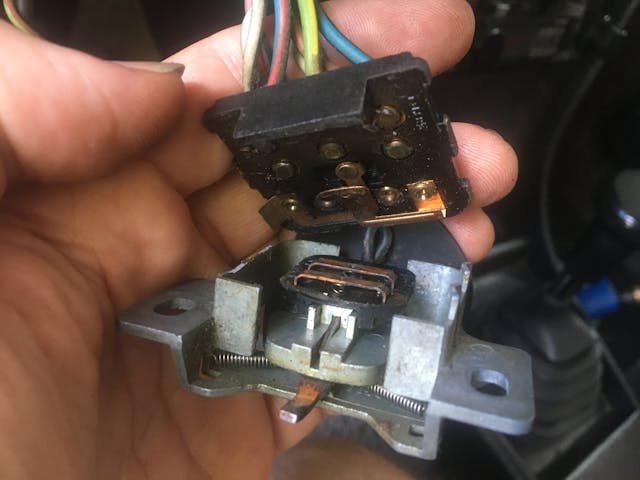
I carefully put the stalk back together, held it together with zip ties, re-attached it, and tested it. It held. For the rest of the trip, I flicked the stalk very carefully lest it fall apart again, but it’s now eight years later, and those zip ties are still in place.
9. J-B Welding a cracked head
I’d say that I’m saving the best for last, but I already wrote about the time that I J-B Welded a cracked cylinder head in a lot of detail here. It almost doesn’t count as a roadside repair, as it didn’t technically fail on the road, and as it certainly wasn’t fixed roadside—I was in a first-class repair shop with the advice of a seen-it-all mechanic—but it was still enormously satisfying to stop the dripping of oil out a crack at the top of the head onto the exhaust manifold using J-B Weld and be driving home a few hours later.

How about you folks? What was your favorite roadside repair? Wipers pulled back and forth with rope? Throttle controlled with a hand-yanked cable? Tell me what you’ve got.
***
Rob’s latest book, The Best Of The Hack Mechanic™: 35 years of hacks, kluges, and assorted automotive mayhem is available on Amazon here. His other seven books are available here on Amazon, or you can order personally-inscribed copies from Rob’s website, www.robsiegel.com.
Check out the Hagerty Media homepage so you don’t miss a single story, or better yet, bookmark it. To get our best stories delivered right to your inbox, subscribe to our newsletters.
Marketplace
Buy and sell classics with confidence





















In 1978 as a university engineering summer student, I was working for the Highways Department as a field lab tech in a remote gravel crushing site, 60 miles in the boonies from the nearest town. I car-pooled with another student, and this day we were in his 1968 VW Type III (fuel injected) which had just had the transmission rebuilt. Shortly after leaving the gravel pit, we noticed a very strong smell of fuel, so we stopped, looked under the engine lid, and fuel was spraying everywhere!
It turned out that the transmission rebuilder had forgot to re-install a grommet on the fuel line where it passed through the metal firewall, and the metal edge of the hole had rubbed through the high pressure fuel line. 60 miles in the bush, no tools… I had a left over piece of Saran Wrap (plastic cling film) from my lunch bag that I wrapped around the fuel line, then asked the car owner for his shoe lace – “Why my shoe lace?” “Your car, your shoe lace!” I bound the shoe lace around the Saran Wrap around the damaged fuel line, and the repair held for us to make it back to civilization.
My story doesn’t involve a catastrophic mechanical mishap, but miles from home my wife and I had purchased a 50’s era, 11-piece rattan sunroom set with cushions, multiple couches, side tables, magazine stands, and chairs with bulky attachments at a great price. I somehow, miraculously fit it into our ’96 Caravan. It took a long time and lots of spatial reasoning. On the drive home I got a flat on US-23 north of Ann Arbor at dusk in evening rush hour. US-23 hadn’t been widened yet and the shoulder was more like a half-shoulder with a guard rail. I had to unload all the various pieces to get to the screw to lower the spare from under the floor, all with vehicles flying past, switch tires with practically no room whatsoever, and then put all the furniture pieces back in place.
If you have a manual transmission, most starters , along with a good battery, are robust enough to move the car out of danger by cranking it in gear. I’ve used that trick a couple of times with my old cars.
Many years ago I actually used that trick in my Rabbit GTI when I got stuck on a flooded street. I put the car in 1st gear and hit the key. Much to my relief, the car lurched its way out of the water, and once the tailpipe was clear, the engine actually started and I just drove off! Can’t do that with modern cars (assuming you can even find one with a manual), because the starter won’t engage unless the clutch is disengaged and/or the transmission is in neutral.
I have owned Fiats for 50 years and could fill volumes on roadside repairs, but I’ll only relate my favorite two:
Three of my buddies and I were going to a concert (in 1979) in my ’75 Fiat 128 Coupe. On the way the right rear tire went flat. Fortunately, the spare was OK, but I did not have a jack. I had previously replaced the brake pads and left the jack in the garage. My three pals picked the car up using back muscles and I changed the tire. The whole process took about 5 minutes.
About 5 years ago, I was cruising the Villages in Florida in my ’80 Fiat 124 Spider when it suddenly died. I pulled over to the roadside, raised the hood and quickly determined that it was the electric fuel pump. As I had my head under the hood, a police car pulled behind me. He said that I could not leave the car here and was calling for a tow. As he went back to his car, I called my wife and asked her to bring me a spare pump I happened to have in the garage. I replaced the pump and drove off just as the tow truck pulled up. The officer had left me his card and I called him when I got home and he said he wouldn’t write me up for the tow.
I bought a 73 BMW CSI that had sat for 10 years but seemed OK so I drove it 90 miles home with no support car. It stalled every 10 minutes but started again and kept going. Turned out it was 2 inches of silt in the gas tank. I was way more brave when I was young and foolish.
Yup, classic fuel-injected behavior of crud being pushed up against the screen in the fuel filter by the high-pressure fuel pump and starving the engine of fuel. Wait a few minutes, stuff falls off, restart it, and you’re good until it happens again in another few minutes. I nursed a just-purchased 2002tii home that way.
My problem occurred in Australia in Melbourne during the 5 o’clock rush. At that time Valeant station wagons, 1962 did not have heaters. They had a plug over the hole that went to the heater. This valiant station wagon was in great shape living in Austria before this for numerous years and coming back for a trip vacation. I bought the station wagon because of the great price. The fix was buying the holes that fit and a spark plug and to hose clamps. I did have to have the radiator flushed out to get all the rust out of it. It did have a happy ending Sam’s the radiator man in Sales New South Wales Fixed it.This was also the bigger of the slant six engines with an automatic transmissionf
My wife had a 1974 Alfa Berlina 2000, with Spica Fuel Injection. We lived in northeast Ohio near Wooster and well off the paved roads (in the early 1980’s, tar & chip roads). The really tiny pieces of gravel had a nasty way of working in behind the guard over the fuel injection drive belt. One piece of gravel under the belt, and wham! No more drive belt, no more fuel. Easy fix, once you got to it – required removing the grill, the radiator, and the crank pully – I did that by the side of the road about 8 times in 4 years. I carried a kit in the trunk that included the drain pan and extra antifreeze as well as the 5 or 6 tools needed and a spare belt. The last time was in 1983, in 16″ of snow, on the shoulder of an unplowed 2 lane in about 35 minutes! I loved that car in spite of the FI belt problem.
Bought a junk 62 Chrysler 300 Sport 4 door in NJ, did a hack brake repair of leaky wheel cylinders, limped over to a friend’s house after a fillup of gas only to find that the tank leaked due to rust in the bottom. Too bad to fix with gas tank repair kit, I wound up dropping the tank and putting it in the trunk upside down and rigging a hose to the tank through a hole in the trunk floor. It would only hold about 7 gallons in this configuration, but I was able to limp back to the Boston area from norther NJ with multiple stops for gas. Car also had bad front end parts and would shimmy around 35 mph but then smooth out again around 50-55 mph. Talk about a terror ride and a dumb thing to do.
I filled my truck with gas one day and as I pulled away from the gas station the tank straps broke. With a newborn in the car, and on the side of an intersection I made calls. The local tow company couldn’t tow me unless i got the tank off the ground. No friends or family could come help. NO ONE stopped to offer help, even the local PD that kept driving by me. Finally, the wife was able to come take the baby, and I used my bed mounted winch and a few pulleys and (floor mats to protect the bedside) to lift the tank back in to position and ratchet strap it in place. It stayed like that for a week while I waited for the tank straps to arrive.
In grad school, we owned a lovely 1975 metallic rose Cadillac SdV Fleetwood, then 16+ years old. It was not exactly a classic car in those days, but it sure was a looker, and what a great highway car it was! We drove it back and forth across the continent in high summer with only one failure, a fuel pump that went out on a lonely stretch of road in Colorado. I wish I could say that I repaired it, but we thumbed a ride to a diner and called a mobile mechanic, who had a mechanical GM fuel pump in stock *in his truck*. $200 and no more than a couple of hours after we coasted to a halt, we were on our way. Widely available, semi-generic domestic parts saved the day with that minor classic, a car I wish I had not sold but could not really have kept in any case.
One wildly unadvisable trip to a family reunion in Banff in my 1972 MGB GT at the onset of winter saw me messing with the points in a foot of snow by a major highway as it got dark. My ten-year-old held the flashlight until I got the points regapped. We turned around and went home that night, and drove a modern car to Banff the next morning.
And how many times did I try to set the diesel pump volume correctly at the roadside in my 1981 Vanagon diesel, incorrectly imagining that it needed adjusting because it ran fine for half an hour, then choked up and lost power? The problem turned out to be algae growing in the tank and eventually clogging the pickup. A new tank solved the problem. Unfortunately, I think I had overdone the pump volume and caused the head to crack…
The moral of the story? Maybe something like “drive big old domestic cars if you need to drive old cars any distance on the highway…”
Rob, you sure owned some weird cars!
My first wife and I were headed for Florida from Atlanta with two friends in a ’61 Econoline van. We were driving down a two-lane in Alabama when the engine started racing and we started slowing down. A glance in the mirror showed the driveshaft in front of the right rear wheel and I hit the brakes. Inspection showed that the front universal joint had cratered. I hitched a ride back to the last small town we had passed through and bought a U-joint at a little parts store. By the time I got back, Bill had removed the remainder of the U-joint and greeted me with the bad news; the transmission yoke was cracked. This was right after the Ford dealer had closed for the weekend.
About then, the owner of the parts store pulled up. He had decided to close up early and check on us. He drove me around to all three of the salvage yards in the area and then brought me back. None of the yards had my part. So I used a ball-peen hammer to close up the yoke as well as I could, put in the new U-joint, and off we went.
That repair got us to Florida and back to Atlanta. Better believe I kept the speed down.
What a guy!
If you mean the parts store owner, I agree!
In 1976 my buddy Bob and I drove from Chicago to Glacier National Park in Montana in my VW squareback for a 10 day back country backpacking trip. It was a fantastic trip and I have many great memories of that trip. On the way home (I think somewhere in N. Dakota) the throttle cable broke… as were we so no money to stop and get it fixed. I dug a roll of nylon line out of my back pack and attached it to the throttle linkage and then fed the line out of the engine compartment (leaving the access cover loose) and across the back seat and up to the front seat. I drove with my left hand, pulled the line with my right hand to accelerate and clutched while Bob handled the shifting. It was several hundred miles home but it was almost all freeway so thankfully not much shifting was needed. Luckily we encountered no LEO’s that probably would have frowned on my throttle “fix” and we successfully made it home.
While driving thru the badlands in the spring when the roads were empty of traffic ( and in the midst of a wind storm), my Buick riviera conked out. Fairly certain it was a bad condenser, I lamented that I was stuck in the middle of nowhere with little chance of a roadside rescue or even a nearby parts store. Suddenly and surprisingly I noticed an old junky pickup truck tooling down the road in my direction. I flagged the driver down and sarcastically asked him if he didn’t happen to have a spare gm condenser on him. He said “hang on” and got out and started rifling thru a box of junk parts in the bed of his pickup. He pulled out a grime covered old condenser and asked “like this?” Having nothing to lose and a new friend to gain, I installed the part and the old Riv fired right up! The angel of a man refused compensation and he sent me on my merry way to California!
You have to love it.
One of my high school buddies had a habit of resurrecting old VW vans from the salvage yard. We were cruising in one at a blistering 55 mph when it popped out of 4th gear. After several more times of popping out of gear, he tied a rope around the shifter and anchored it down to a floor bolt. Problem fixed!